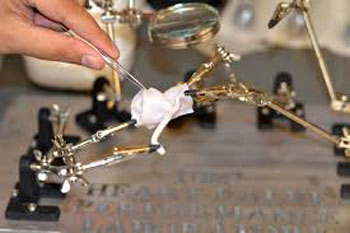Synthetic Heart Valves Help Surgeons Improve Skills
By HospiMedica International staff writers
Posted on 15 Sep 2016
New polyvinyl materials make it possible for surgeons and medical residents to practice coronary artery bypass grafting (CABG) surgery using synthetic tissues, instead of cadavers.Posted on 15 Sep 2016
Developed by researchers at the University of British Columbia Okanagan campus (UBC; Kelowna, Canada) and Kelowna General Hospital (KGH; Canada), the biomimetic platform uses a polyvinyl alcohol (PVA) hydrogel that mimics the geometric properties of vasculature, with features that approximate human tissue and with fairly consistent mechanical properties. The researchers used the platform to create synthetic heart valves, arteries, and veins. They also simulated a case of autogenous saphenous vein CABG, which is placed from the aorta to the left anterior descending coronary artery.

Image: Synthetic tissues that mimic human vasculature help surgeons train (Photo courtesy of UBC).
They showed that the standard procedures of the CABG were successfully executed on the platform, suggesting that the proposed technology could also be applied to simulate other complicated surgeries such as end-to-end, side-to-end, and sequential anastomoses. The researchers are currently working towards creating a complete synthetic heart using the new PVA material, which could then be used to largely eliminate the need to use any animal or human cadaver tissues and organs when practicing heart surgery. The study was published on July 8, 2016, in Cardiovascular Engineering and Technology.
“One of the major issues with using arteries from human or animal cadavers is that they break down very quickly if they are not treated with preservatives. This synthetic material doesn't decompose and can't be contaminated, meaning doctors can practice their technique almost anywhere,” said lead author Hadi Mohammadi, PhD, of UBC. “An added benefit is that this material can be created safely and cheaply, which could solve any issues surgeons currently have in accessing practice materials.”
PVA is a colorless, water-soluble synthetic resin employed principally in the treatment of textiles and paper. It has excellent film forming, emulsifying, and adhesive properties, and is also resistant to oil, grease, and solvents. It has high tensile strength and flexibility, as well as high oxygen and aroma barrier properties. But these properties are dependent on humidity; water acts as a plasticizer, reducing its tensile strength, but increasing its elongation and tear strength.
Related Links:
University of British Columbia














